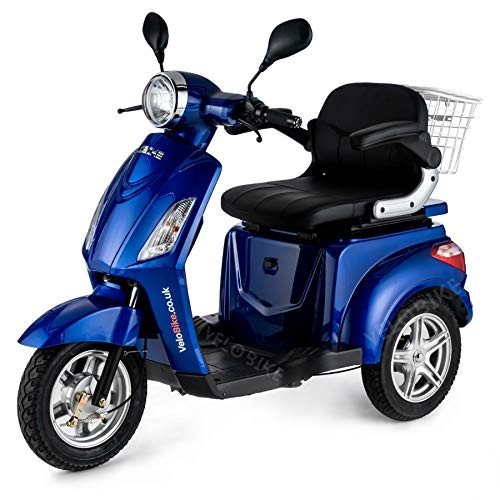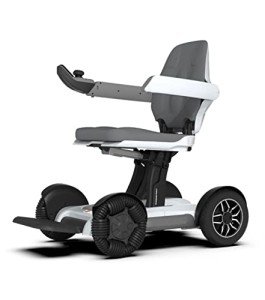
Best Lightweight Mobility Scooter Uk
Add a review FollowOverview
-
Founded Date December 27, 1959
-
Sectors Software Development
-
Posted Jobs 0
-
Viewed 10
Company Description
The 9 Things Your Parents Teach You About Best Mobility Scooter UK

Exploring the very best Mobility Scooters in the UK: A Comprehensive Guide
Mobility scooters have actually become an essential aid for numerous individuals in the UK who deal with difficulties with mobility, whether due to age, injury, or a long-term condition. These scooters supply independence, convenience, and a sense of freedom, permitting users to navigate their every day lives with greater ease. This extensive guide will check out the top mobility scooters available in the UK market, their functions, and how to choose the best one to suit your requirements.
Comprehending Mobility Scooters
Before delving into the very best mobility scooter uk designs, it’s essential to comprehend what mobility scooters are and how they work. A mobility scooter is a battery-powered lorry created for people who have trouble walking fars away or meaning extended durations. They typically include a comfortable seat, a handlebar for steering, and a spacious platform to accommodate the user’s feet. Mobility scooters can be used both indoors and outdoors, depending on the design, and are typically classified into three main categories: class 2, class 3, and off-road scooters.

Class 2 Mobility Scooters
Class 2 scooters are developed for pavement usage and have a maximum speed limit of 4 miles per hour. They are usually smaller sized and more compact, making them ideal for indoor use and easy storage. These scooters are best for users who mainly require support with brief journeys, such as grocery shopping or visiting regional amenities.
Class 3 Mobility Scooters
Class 3 scooters are more effective and can be utilized on both pavements and roads, with an optimal speed limit of 8 miles per hour on the roadway. They are larger and use more features, such as adjustable seating, enhanced suspension, and much better battery life. These scooters are suitable for users who need to travel longer ranges and need a higher degree of convenience and assistance.
Off-Road Mobility Scooters
Off-road scooters are developed for more rugged surface and are geared up with larger wheels and more robust frames. They are ideal for users who take pleasure in outdoor activities or require to navigate irregular surface areas, such as parks or rural areas.
Top Picks for the very best Mobility Scooters in the UK
1. Vivacity Vee-Go 3 Class 2 Scooter
-
Secret Features:
- Compact design for simple maneuverability and storage
- Weight capability of up to 20 stone (127 kg)
- Adjustable tiller for comfortable guiding
- LED lights for improved exposure
- Detachable battery for simple charging
-
Why It’s Great:The Vee-Go 3 is an exceptional option for those who require a scooter for both indoor and outside usage. Its compact size makes it simple to steer in tight areas, while the adjustable tiller guarantees a comfy trip. The LED lights and removable battery are included benefits that make it a versatile and easy to use alternative.
2. Pride Mobility Go-Go Elite 4 Wheel Class 3 Scooter
-
Secret Features:
- Advanced suspension system for a smooth ride
- Comfortable captain’s chair with multiple adjustments
- Series of as much as 18 miles on a single charge
- Delta tiller for easy control
- Optimum weight capability of 28 stone (178 kg)
-
Why It’s Great:The Go-Go Elite 4 Wheel is a high-grade class 3 scooter that uses a high degree of convenience and performance. Its advanced suspension system and comfy seat make it ideal for longer journeys, and the delta tiller supplies precise control. The extended variety and high weight capability are fringe benefits that make it a standout choice.
3. Invacare Top End Spirit Class 3 Scooter
-
Key Features:
- Robust frame designed for toughness
- High capacity battery with a variety of approximately 24 miles
- Adjustable height seat and tiller
- Effective motor for hill climbing
- Anti-tip front wheels for added security
-
Why It’s Great:The Invacare Top End Spirit is a trustworthy and resilient class 3 scooter that can manage a range of surfaces. Its high-capacity battery and powerful motor make it appropriate for longer journeys, and the adjustable height seat and tiller ensure a comfy and personalized trip. The anti-tip front wheels provide an additional layer of security, making it a top choice for those who value dependability and performance.
4. Daybreak Medical Pro LITE Class 2 Scooter
-
Key Features:
- Lightweight and portable design
- Easy disassembly for transport
- Maximum weight capability of 18 stone (114 kg)
- Compact size for indoor usage
- Spacious foot platform
-
Why It’s Great:The Pro LITE is a lightweight and portable class 2 scooter that is ideal for users who require to transport their scooter regularly. Its easy disassembly and compact size make it ideal for indoor usage and storage, while the large foot platform makes sure a comfortable trip. The Pro LITE is an exceptional choice for those who require a scooter for brief, everyday trips.
5. Evair Scooters G5 Class 3 Scooter
-
Secret Features:
- Innovative design with a foldable frame
- Variety of as much as 20 miles on a single charge
- Optimum weight capability of 26 stone (166 kg)
- Adjustable seat and tiller
- LED lights and horn for improved safety
-
Why It’s Great:The Evair G5 is a class 3 scooter that stands apart for its innovative collapsible design, making it simple to transportation and store. Its prolonged variety and high weight capacity make it appropriate for longer journeys, and the adjustable seat and tiller make sure a comfy and tailored trip. The LED lights and horn are additional safety features that add to its appeal.
Elements to Consider When Choosing a Mobility Scooter
1. Function and Usage
- Indoor Use: If you primarily require a scooter for indoor usage, a class 2 model with a compact style and great maneuverability is perfect.
- Outside Use: For outside usage, a class 3 scooter with a longer variety and more robust features is advised.
- Fars away: If you prepare to use your scooter for cross countries or travel on roadways, a class 3 scooter with a high-capacity battery and sophisticated suspension is necessary.
2. Weight Capacity
- User Weight: Ensure the scooter you pick can securely support your weight. Many scooters have an optimum weight capacity, which can range from 18 stone (114 kg) to 28 stone (178 kg).
3. Battery Life and Charging
- Range: Consider the variety of the scooter, particularly if you require to take a trip fars away. Scooters can range from 10 to 24 miles on a single charge.
- Charging Convenience: Look for a scooter with a removable battery for easy charging, or one that can be charged using a standard household plug.
4. Security Features
- Braking System: A good braking system is essential for safety. Look for scooters with electronic or mechanical brakes, and guarantee they are simple to operate.
- Lighting and Visibility: LED lights and reflectors can enhance visibility, specifically when using the scooter during the night or in low light conditions.
- Anti-Tip Wheels: Anti-tip wheels can provide additional stability, specifically on uneven surface areas.
5. Convenience and Adjustability
- Seat Comfort: Choose a scooter with a comfy and adjustable seat. Functions like reclining, adjustable height, and backrest tilt can make a substantial distinction in your convenience.
- Tiller Adjustability: An adjustable tiller can help you discover the ideal steering position and decrease pressure throughout use.
6. Mobility and Storage
- Disassembly: If you need to carry your scooter regularly, look for designs that are simple to disassemble or fold.
- Storage Space: Consider the storage space readily available in your home or vehicle. Compact models are easier to keep and transfer.
Regularly Asked Questions (FAQs)
1. Do I require a license to drive a mobility scooter in the UK?
- Response: No, you do not need a license to drive a class 2 or class 3 mobility scooter in the UK. Nevertheless, you need to satisfy certain requirements, such as being disabled or having a medical condition that affects your mobility. For roadway use, class 3 scooters must be signed up with the DVLA and have a valid MOT.
2. Can I use a class 3 mobility scooter on the pavement?
- Answer: Yes, class 3 mobility scooters can be utilized on both pavements and roads. When utilizing a class 3 scooter on the pavement, the speed limit is 4 mph. On the road, the speed limit is 8 miles per hour.
3. Just how much does a mobility scooter expense?
- Answer: The cost of a mobility scooter can vary commonly depending upon the design and features. Class 2 scooters generally vary from ₤ 500 to ₤ 1,500, while class 3 scooters can cost in between ₤ 1,000 and ₤ 3,000. High-end off-road designs can surpass ₤ 3,000.
4. What upkeep do mobility scooters need?
- Response: Regular upkeep is important to keep your mobility scooter in good working condition. This includes inspecting the battery, tire pressure, and brakes. Many producers advise a service every 6 to 12 months, depending upon usage. Some scooters include maintenance strategies, which can be beneficial.
5. Can I get a mobility scooter through the NHS?
- Answer: The NHS provides mobility scooters through the Disabled Living Allowance (DLA) or Personal Independence Payment (PIP). You can get a mobility scooter through your regional NHS Wheelchair and Specialist Seating Service. However, the accessibility and type of scooter supplied can differ depending upon your needs and the service’s resources.
6. How do I choose the ideal size of mobility scooter?
- Answer: The ideal size of mobility scooter depends on your height, weight, and convenience choices. Test drive different designs to find one that fits you well and provides the essential adjustments, such as seat height and tiller position. If you have specific physical constraints, consider speaking with a mobility expert to guarantee you pick the very best model for your requirements.
7. Exist any legal restrictions on using a mobility scooter?
- Answer: Yes, there are legal constraints on using mobility scooters in the UK. Class 2 scooters are restricted to 4 mph and can just be utilized on pavements and personal land. Class 3 scooters can be utilized on pavements at 4 miles per hour and on roadways at 8 miles per hour, but they need to be signed up with the DVLA and have a legitimate MOT if used on the roadway. Users need to likewise be aged 14 or over and have a medical condition that impacts their mobility.
Selecting the ideal mobility scooter is a decision that can substantially impact your everyday life. Whether you need a compact class 2 scooter for brief trips or a powerful class 3 scooter for longer journeys, the UK market offers a wide variety of options to suit various requirements and choices. By thinking about factors such as function, weight capability, battery life, security functions, convenience, and mobility, you can discover the best mobility scooter to enhance your independence and quality of life.
For those who are new to utilizing mobility scooters, it’s also crucial to acquaint yourself with the legal requirements and security standards. Test driving various models and seeking advice from a mobility professional can help you make an informed decision and ensure you choose a scooter that satisfies your particular requirements.
In the end, a well-chosen mobility scooter can be a life-changing investment, supplying you with the liberty and self-reliance to enjoy your everyday activities with ease and confidence.


